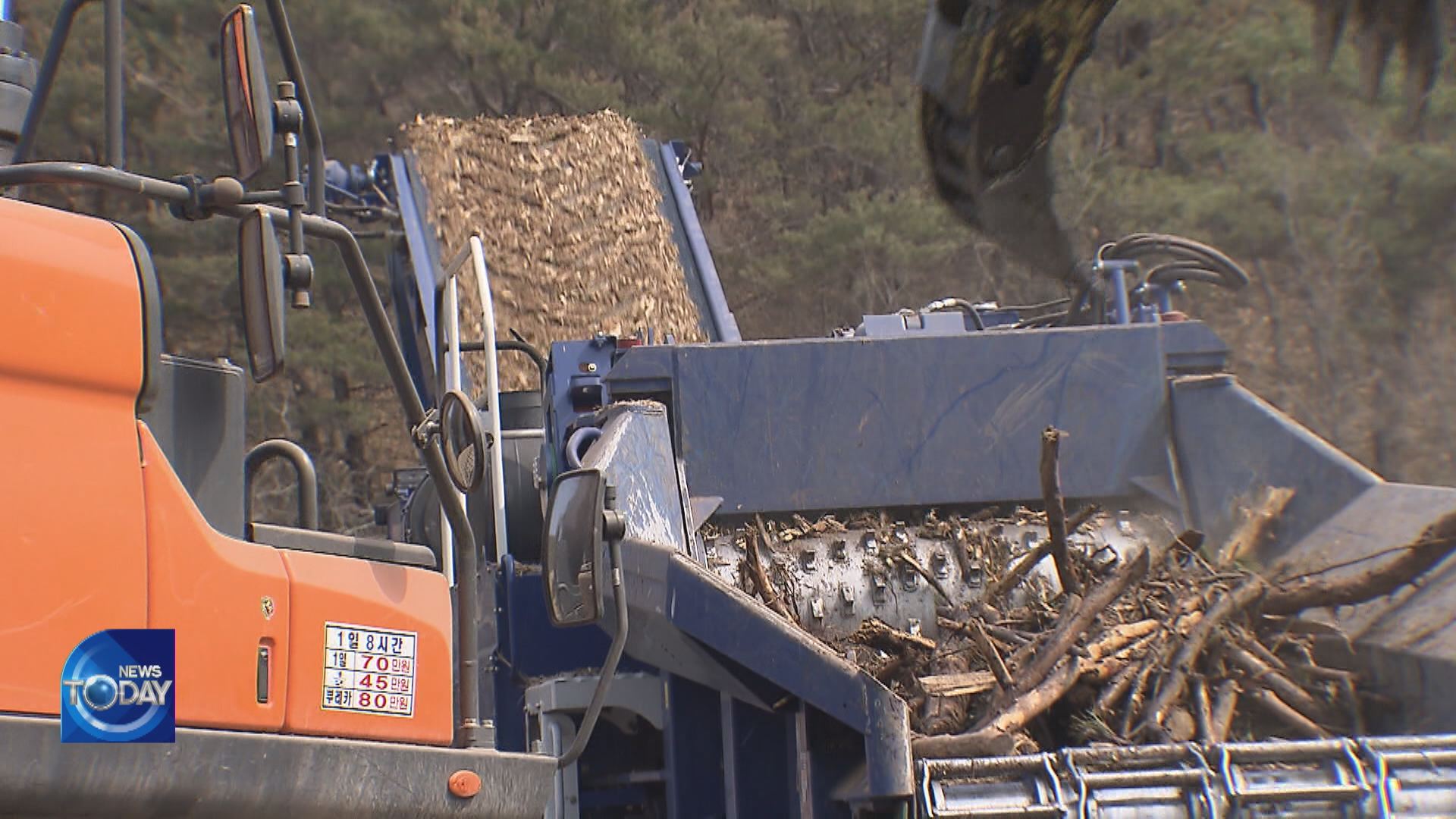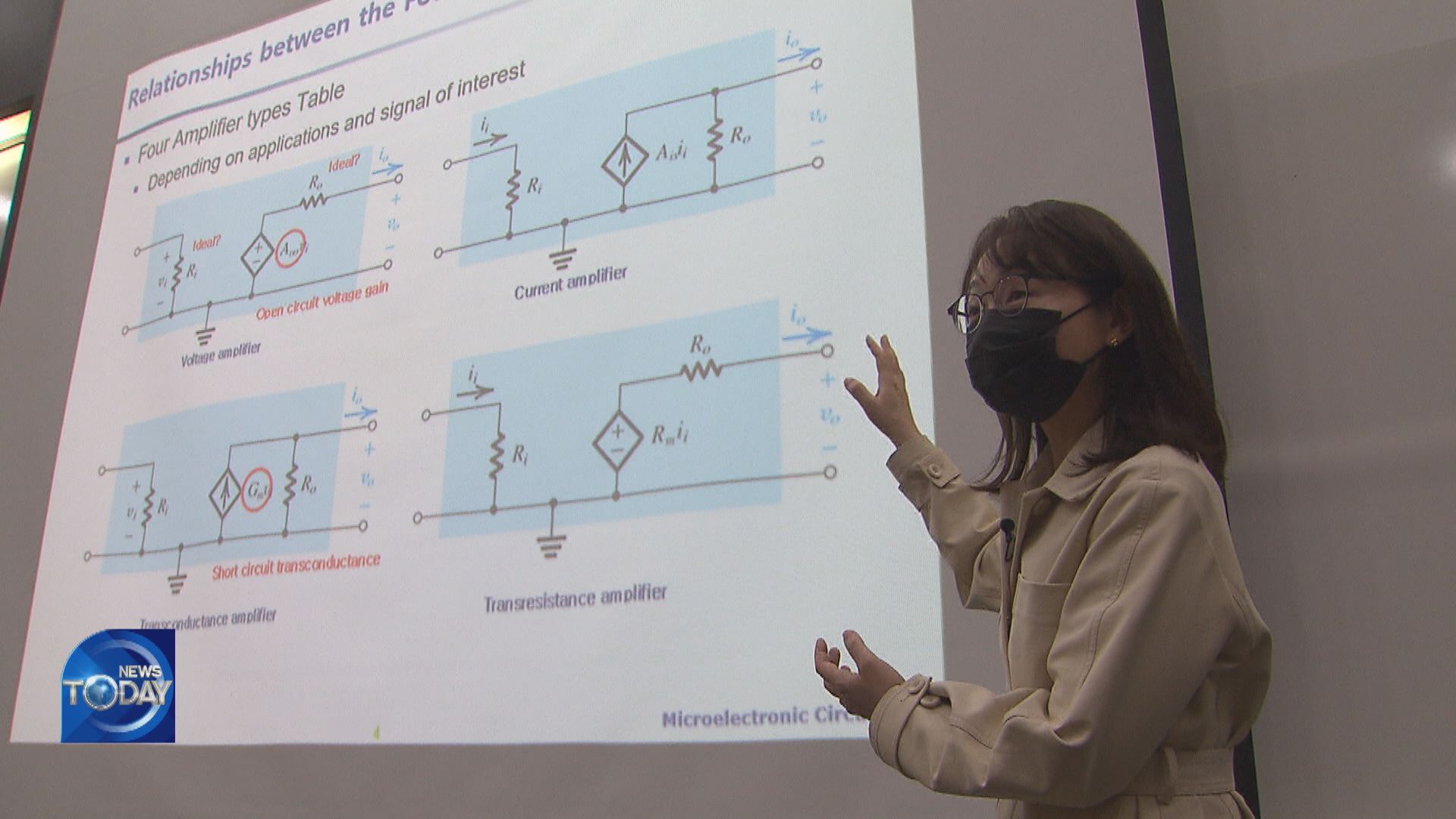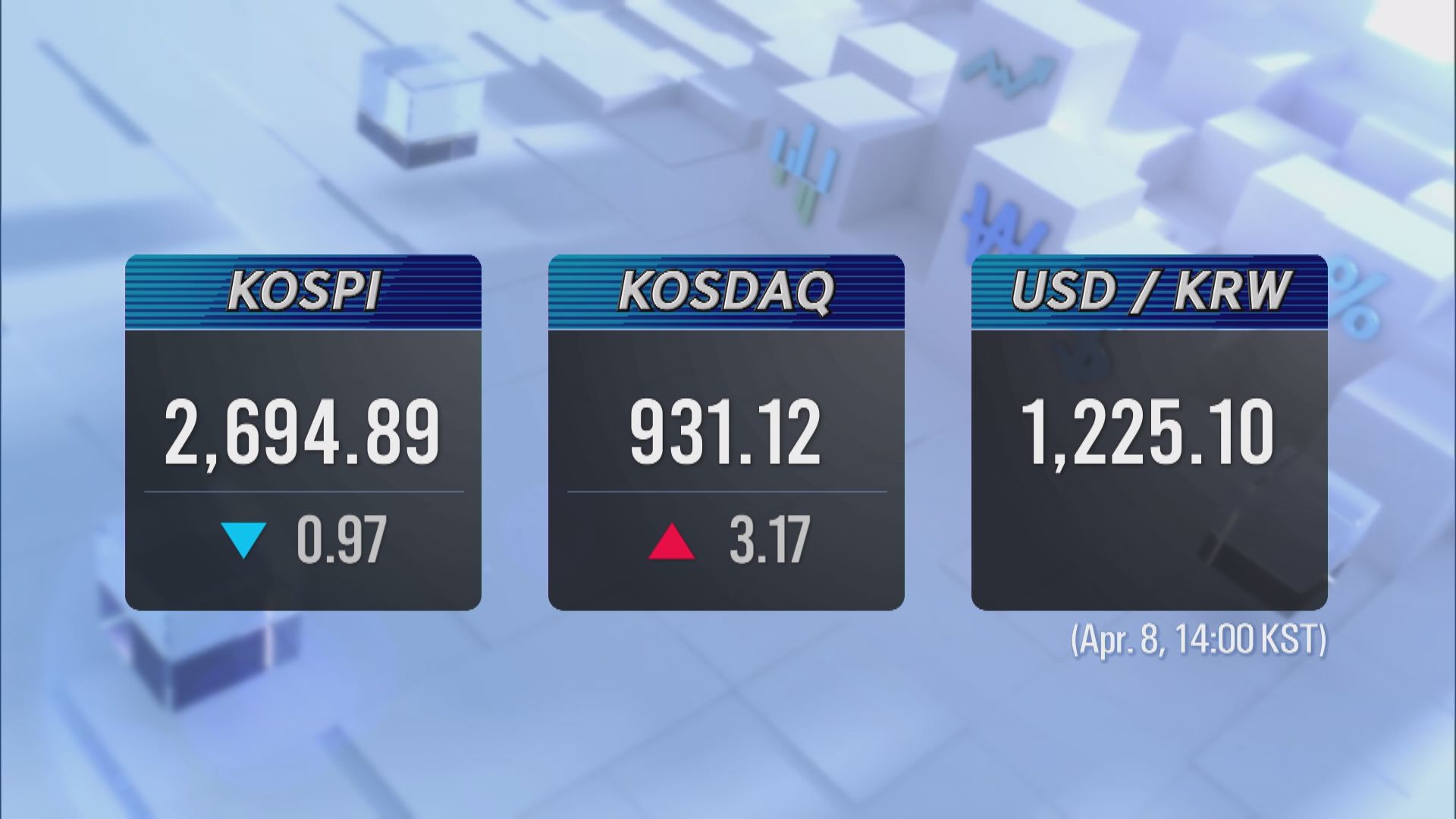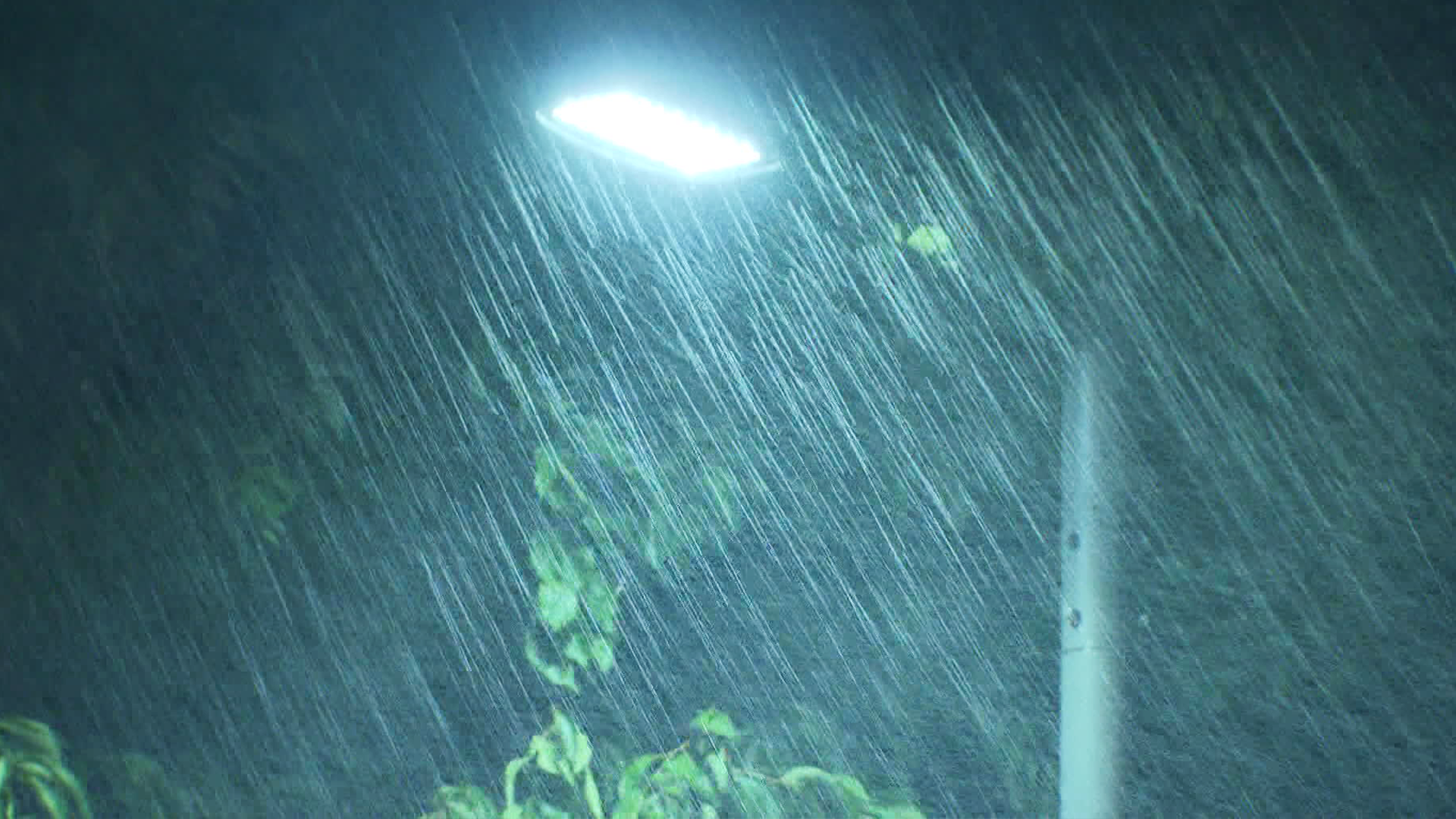USING BURNT TREES AS RENEWABLE ENERGY
입력 2022.04.08 (15:12)
수정 2022.04.08 (16:46)
읽어주기 기능은 크롬기반의
브라우저에서만 사용하실 수 있습니다.
[Anchor Lead]
The recent wildfires on the east coast of Korea have burned forestland equaling 30000 soccer fields in size. If the unsightly burned trees are left unattended, there is a risk of landslides. But cutting them down costs an astronomical amount of money. If they are used as a source of renewable energy, mountain owners can reap profits without having to cut the trees personally. But there are limitations.
[Pkg]
Large excavators move burnt trees. They were damaged by wildfires in Andong, Gyeongsangbuk-do Province last year. The trees are placed in a crusher and ground into wood chips. They are then transported in trucks to thermo-electric power plants on the west coast of the nation.
[Soundbite] Kang Young-chang(National Forestry Cooperative Federation) : “They are transported to thermo-electric power plants, where they are mixed with coal and used as fuel. We process 200-300 tons daily.”
Trees charred and damaged in wildfires or destroyed by heavy rainfall are increasingly being used to produce renewable energy. The use of this energy source called "forest biomass" has grown by four-fold in Korea in the past two years. The use of trees burned in forest fires has surged 500 times as a result of massive wildfires that occurred recently. Forestry cooperatives are taking care of felling, transportation, crushing and sale of reprocessed trees. About 20-30 percent of revenues are returned to mountain owners. But few mountain owners know about this state-funded project.
[Soundbite] Prof. Kim Nam-hun(Gangwon Univ.) : “Measures are needed to carry out this project on a larger scale with the help of the central or local governments.”
Another reason this project remains sluggish is because it's limited to areas with a high risk of landslides, such as those located close to private houses or roads. Such areas account for only 5 percent of the entire area that bore the brunt of the recent wildfires on the east coast.
The recent wildfires on the east coast of Korea have burned forestland equaling 30000 soccer fields in size. If the unsightly burned trees are left unattended, there is a risk of landslides. But cutting them down costs an astronomical amount of money. If they are used as a source of renewable energy, mountain owners can reap profits without having to cut the trees personally. But there are limitations.
[Pkg]
Large excavators move burnt trees. They were damaged by wildfires in Andong, Gyeongsangbuk-do Province last year. The trees are placed in a crusher and ground into wood chips. They are then transported in trucks to thermo-electric power plants on the west coast of the nation.
[Soundbite] Kang Young-chang(National Forestry Cooperative Federation) : “They are transported to thermo-electric power plants, where they are mixed with coal and used as fuel. We process 200-300 tons daily.”
Trees charred and damaged in wildfires or destroyed by heavy rainfall are increasingly being used to produce renewable energy. The use of this energy source called "forest biomass" has grown by four-fold in Korea in the past two years. The use of trees burned in forest fires has surged 500 times as a result of massive wildfires that occurred recently. Forestry cooperatives are taking care of felling, transportation, crushing and sale of reprocessed trees. About 20-30 percent of revenues are returned to mountain owners. But few mountain owners know about this state-funded project.
[Soundbite] Prof. Kim Nam-hun(Gangwon Univ.) : “Measures are needed to carry out this project on a larger scale with the help of the central or local governments.”
Another reason this project remains sluggish is because it's limited to areas with a high risk of landslides, such as those located close to private houses or roads. Such areas account for only 5 percent of the entire area that bore the brunt of the recent wildfires on the east coast.
■ 제보하기
▷ 카카오톡 : 'KBS제보' 검색, 채널 추가
▷ 전화 : 02-781-1234, 4444
▷ 이메일 : kbs1234@kbs.co.kr
▷ 유튜브, 네이버, 카카오에서도 KBS뉴스를 구독해주세요!
- USING BURNT TREES AS RENEWABLE ENERGY
-
- 입력 2022-04-08 15:12:28
- 수정2022-04-08 16:46:23

[Anchor Lead]
The recent wildfires on the east coast of Korea have burned forestland equaling 30000 soccer fields in size. If the unsightly burned trees are left unattended, there is a risk of landslides. But cutting them down costs an astronomical amount of money. If they are used as a source of renewable energy, mountain owners can reap profits without having to cut the trees personally. But there are limitations.
[Pkg]
Large excavators move burnt trees. They were damaged by wildfires in Andong, Gyeongsangbuk-do Province last year. The trees are placed in a crusher and ground into wood chips. They are then transported in trucks to thermo-electric power plants on the west coast of the nation.
[Soundbite] Kang Young-chang(National Forestry Cooperative Federation) : “They are transported to thermo-electric power plants, where they are mixed with coal and used as fuel. We process 200-300 tons daily.”
Trees charred and damaged in wildfires or destroyed by heavy rainfall are increasingly being used to produce renewable energy. The use of this energy source called "forest biomass" has grown by four-fold in Korea in the past two years. The use of trees burned in forest fires has surged 500 times as a result of massive wildfires that occurred recently. Forestry cooperatives are taking care of felling, transportation, crushing and sale of reprocessed trees. About 20-30 percent of revenues are returned to mountain owners. But few mountain owners know about this state-funded project.
[Soundbite] Prof. Kim Nam-hun(Gangwon Univ.) : “Measures are needed to carry out this project on a larger scale with the help of the central or local governments.”
Another reason this project remains sluggish is because it's limited to areas with a high risk of landslides, such as those located close to private houses or roads. Such areas account for only 5 percent of the entire area that bore the brunt of the recent wildfires on the east coast.
The recent wildfires on the east coast of Korea have burned forestland equaling 30000 soccer fields in size. If the unsightly burned trees are left unattended, there is a risk of landslides. But cutting them down costs an astronomical amount of money. If they are used as a source of renewable energy, mountain owners can reap profits without having to cut the trees personally. But there are limitations.
[Pkg]
Large excavators move burnt trees. They were damaged by wildfires in Andong, Gyeongsangbuk-do Province last year. The trees are placed in a crusher and ground into wood chips. They are then transported in trucks to thermo-electric power plants on the west coast of the nation.
[Soundbite] Kang Young-chang(National Forestry Cooperative Federation) : “They are transported to thermo-electric power plants, where they are mixed with coal and used as fuel. We process 200-300 tons daily.”
Trees charred and damaged in wildfires or destroyed by heavy rainfall are increasingly being used to produce renewable energy. The use of this energy source called "forest biomass" has grown by four-fold in Korea in the past two years. The use of trees burned in forest fires has surged 500 times as a result of massive wildfires that occurred recently. Forestry cooperatives are taking care of felling, transportation, crushing and sale of reprocessed trees. About 20-30 percent of revenues are returned to mountain owners. But few mountain owners know about this state-funded project.
[Soundbite] Prof. Kim Nam-hun(Gangwon Univ.) : “Measures are needed to carry out this project on a larger scale with the help of the central or local governments.”
Another reason this project remains sluggish is because it's limited to areas with a high risk of landslides, such as those located close to private houses or roads. Such areas account for only 5 percent of the entire area that bore the brunt of the recent wildfires on the east coast.
이 기사가 좋으셨다면
-
좋아요
0
-
응원해요
0
-
후속 원해요
0

















이 기사에 대한 의견을 남겨주세요.